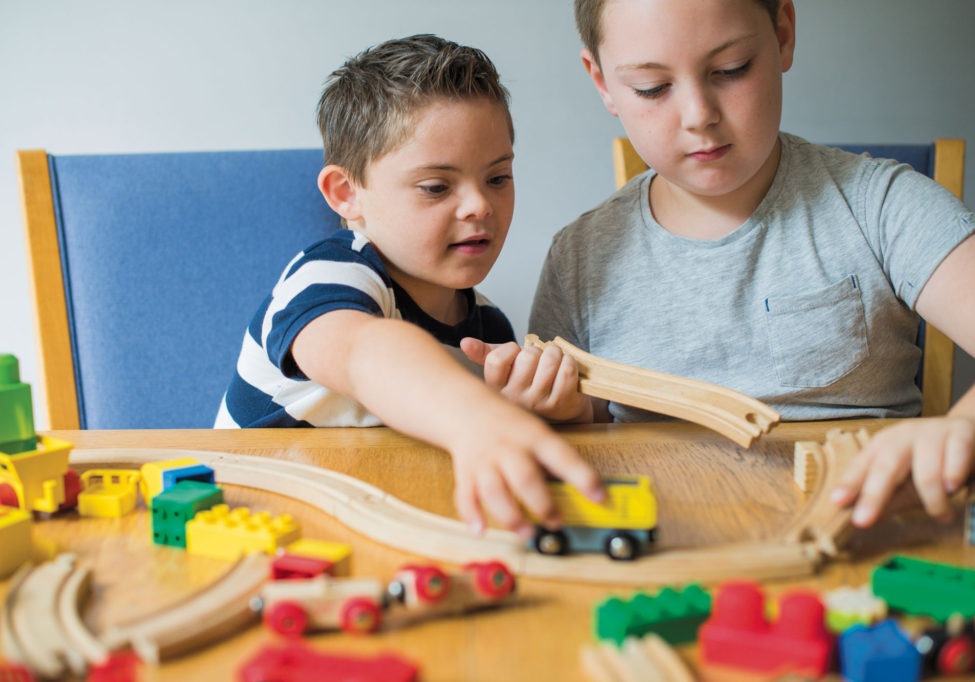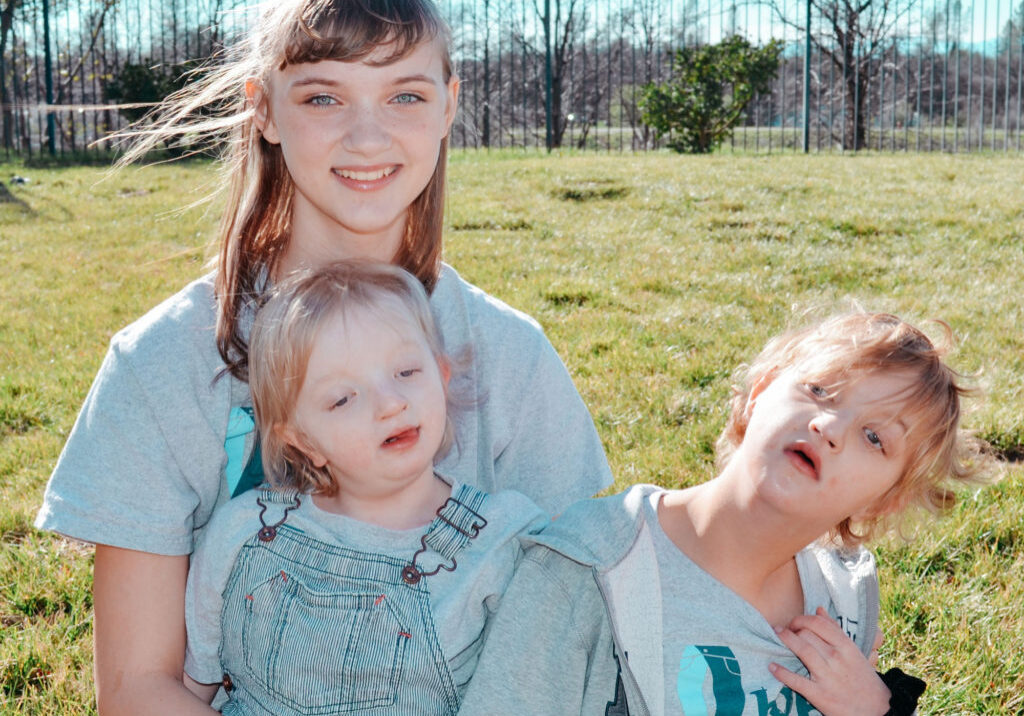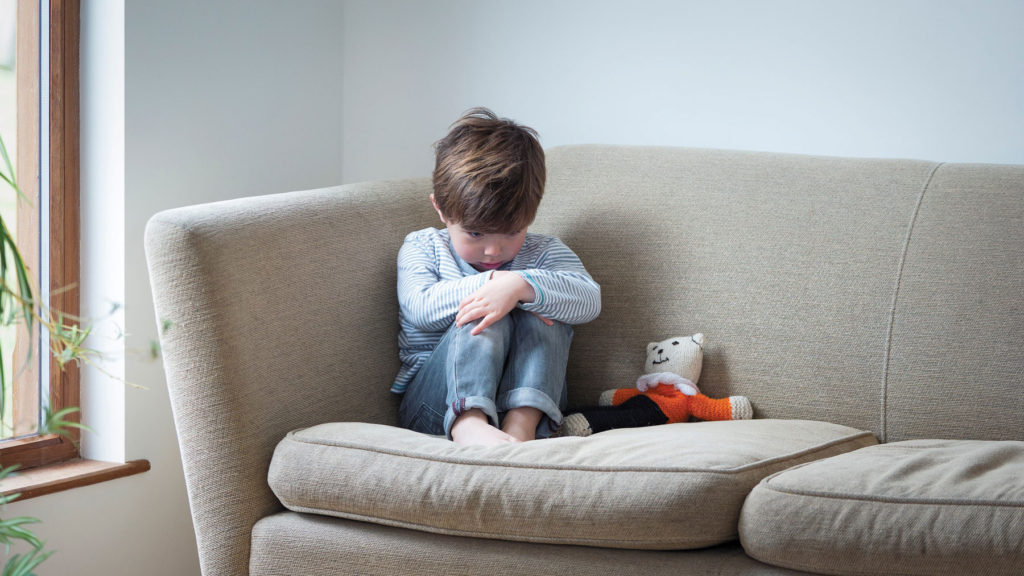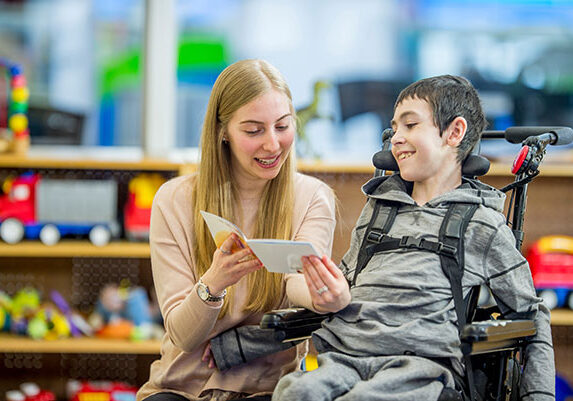“Imagine being in an environment where the noise around you is amplified to the highest level, the temperature is the coldest or hottest you have ever felt, you are wearing the most uncomfortable clothing that has ever touched your skin, and you are nauseated by a repulsive smell. All at the same time. What would be your response? Most would quickly escape the situation.” says Occupational Therapist Dana Lyons.
“These are examples of what a child with Sensory Processing Disorder feels, but they cannot escape the symptoms. As a result, they may respond with anger, frustration, or ultimately avoid situations which may cause a breakdown.”
Sensory Processing refers to how the nervous system receives messages from the senses and turns them into appropriate motor and behavioral responses. “Everyone processes sensory input, but some people process it differently than others.” says Carrie Grosdidier, occupational therapist. “When the processing interferes with our ability to function on a day to day basis is when we have a problem.”
Sensory Processing Disorder affects everyone differently
Sensory Processing Disorder (SPD) can be hard to diagnose because it affects each person differently. Lyons explains that different children may be affected by nervous systems that are either hypersensitive (overstimulated) or hyposensitive. (under simulated).
A child with hypersensitive responses may:
- Be distracted by noises that sound normal to others (flushing toilets, clanking silverware)
- Fear surprise touch, or avoid hugs
- Avoid swings and playground equipment that others enjoy
- Have poor balance, with frequent falls
A child with hyposensitive responses may:
- Have a constant need to touch people or textures
- Have an extremely high tolerance for pain
- Not understand her own strenth, and often harm other children and/or pets when playing
- Be fidgety and unable to sit still, and crave movement-based play such as spinning, jumping, swinging etc.
- Seem to be a “thrill seeker” and can be dangerous at times
Occupational Therapists can help with the challenges
Lyons says, “Children with SPD are not ‘bad’ children. They are simply trying to survive in their own skin, in a world with heightened or lowered sensations. Typical punishment for ‘bad’ behavior is not optimal and can cause regression rather than progression.”
Sensory Processing does create challenges for families, but there is treatment available for kids who struggle with it. Mom Joy Alsup says, “We had a fabulous occupational therapist that helped my son. She gave us tools and gave him permission to figure out what worked for him and what didn’t. He has a high need for tight, long hugs and we understand that this is what helps him. It’s a huge priority for us.”
An occupational therapist may recommend tools such as weighted vests or activities such as swinging, pushing or pulling heavy objects across the room, or jumping on a trampoline. Many of these activities are fun for the child and can be integrated into playtime at home. (http://www.sensorysmarts.com)
“The therapy helps more than just their physical strengths but also their emotional strengths.” says Stephanie Beaudry, mom of two children with SPD. “When my daughter first started therapy, she was extremely shy. She wouldn’t even talk to children her own age when they approached her. Now, four months later, she is a social butterfly.”
Families can support each other so their children thrive
Although families that deal with SPD may have struggles with things other people see as “normal” activities, many parents find hope in their child’s progress and support from other parents dealing with this disorder. “One thing I have learned after experiencing our journey is that I am not alone. There are so many others that understand what I am going through and we are there to support each other in many ways.” says Beaudry.
As a mother of a child with Sensory Processing Disorder, I encourage others to educate themselves about SPD and begin to approach the situation from the child’s perspective. Parents can then adjust their environment and celebrate as their child meets their goals and overcomes challenges. It takes a lot of patience, persistence, and love to parent a child with SPD, but when a child has acceptance and support, he can work through the struggles, and thrive in school and at home.
Joy Alsup says “When my son was diagnosed, I felt like he would be limited in his future. He has worked through many of his issues and I see his SPD as part of what makes him unique. I wouldn’t have him any other way.”
Posted in: Special Needs
Comment Policy: All viewpoints are welcome, but comments should remain relevant. Personal attacks, profanity, and aggressive behavior are not allowed. No spam, advertising, or promoting of products/services. Please, only use your real name and limit the amount of links submitted in your comment.
You Might Also Like...

Supporting the Siblings of Children with Special Needs
What it’s like to grow up with a sibling with special needs In families of children with special needs, we hear a lot about the importance of providing support for […]

Rare Genes Day – Raising Awareness in the North State
Rare Disease Day — also known as Rare Genes Day — is a globally coordinated movement that takes place around the last day of February, and will be celebrated with […]

Beyond Physical Changes: Navigating Puberty in Teens with Diverse Needs
As any parent or caregiver of a teenager can tell you, the onset of puberty can be a wild roller-coaster ride. It’s a whirlwind of physical and emotional changes, with […]

Mental Health Issues in Kids – Signs & How to Ask for Help
Roughly 7.7 million children in the United States live with at least one mental health disorder. Attention Deficit Hyperactivity Disorder (ADHD), Anxiety, Depression, and behavioral disorders such as Oppositional Defiant […]




